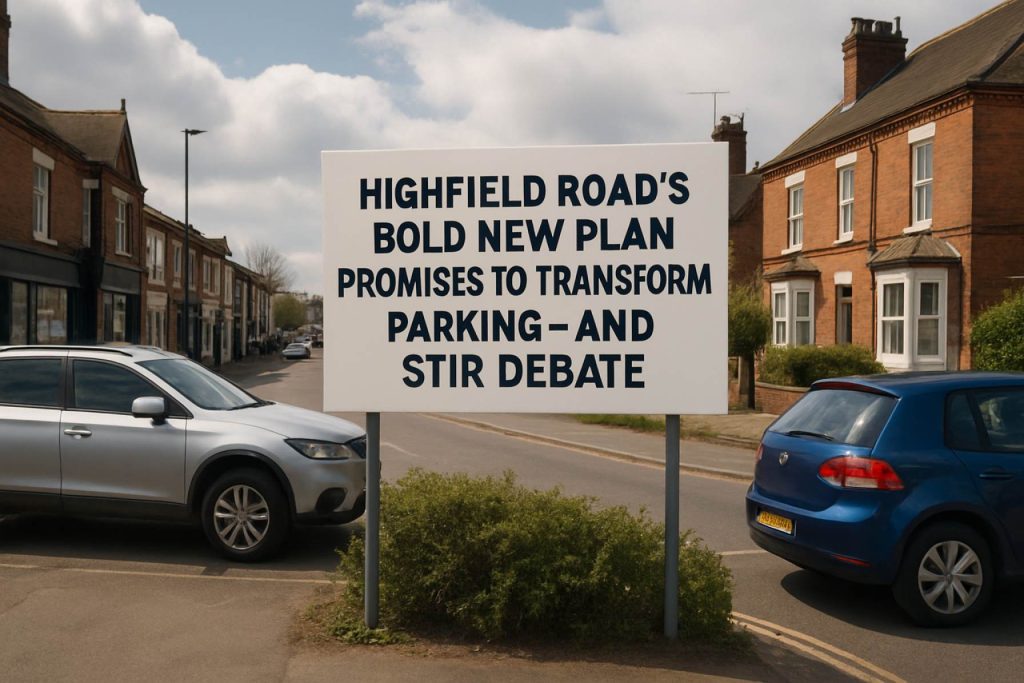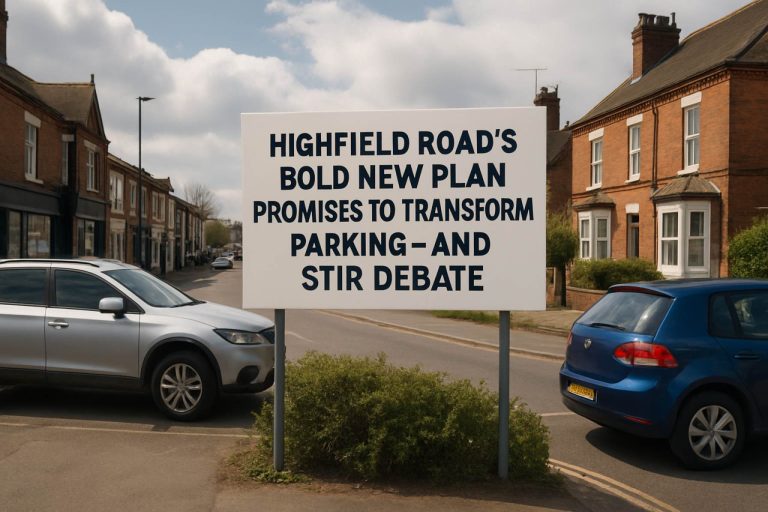
- Electric vehicle (EV) charging bays are being introduced on Highfield Road in Farnworth, replacing some existing petrol and diesel parking spaces.
- Bolton Council is leading this urban upgrade, signaling a broader push for EV infrastructure and modern traffic management.
- New parking restrictions and enhanced enforcement aim to improve convenience for EV drivers and curb antisocial parking behaviors.
- Residents and shoppers may notice changed parking dynamics, with stricter regulations and increased scrutiny by the highways department.
- The council is seeking local input on these changes as part of its ongoing community engagement and urban improvement initiatives.
- This shift reflects Farnworth’s adaptation to electric mobility, balancing progress with public feedback in everyday urban life.
Electric vehicles are quietly revolutionizing British roads, and one corner of Farnworth is about to feel the charge. Outside the cluster of shops on Highfield Road—including local fixtures like Co-op and Premier—a new breed of parking space is coming. Where there were once two double bays for petrol and diesel cars, four dedicated electric vehicle charging spots will soon take shape, accented by crisp line markings and modern infrastructure.
This is more than a facelift. Bolton Council‘s move signals a seismic shift in everyday life. On a stretch where mingling shoppers and tireless commuters battle for curbside spots, the change promises a leap forward in convenience for EV drivers—and a new logistical dance for everyone else. Bold yellow lines will sweep across sections of the street, restricting parking in sensitive areas while guiding traffic with a firmer hand.
People who rely on the bustling shops of Highfield Road may notice stricter enforcement. The Council’s highways department has announced that a careful review of parking regulations is on the way, part of a broader campaign to tame unruly driving and stamp out antisocial parking. Recent clampdowns in neighboring areas like Kearsley West and Primrose Street near the local nursery school reflect the council’s resolve. These changes aren’t happening in isolation, but as a patch in a larger quilt of urban improvement efforts.
The council has published its updated plans for public scrutiny and is actively inviting comments by mid-June. For local residents, this is a rare chance to weigh in on decisions that could affect daily routines—shopping, picking up children, and zipping through Farnworth’s arteries.
More than a parking rearrangement, this development represents the growing pains of a society making the transition from petrol pumps to plug sockets, from laissez-faire curbside habits to a disciplined urban flow. This is the sound of a local street entering the future—and not everyone is sure what it will bring.
For those interested in how similar changes are reshaping communities, or in voicing their thoughts on traffic reform and urban development, the council’s openness to feedback underscores the importance of civic participation. It’s a reminder that as technology changes the way cities breathe, every street corner and parking space can become a site of progress—or contention.
Key takeaway: As electric vehicles become part of everyday life, towns like Farnworth are adapting their streets to meet new demands—challenging old habits while offering a glimpse of the future, one parking bay at a time.
For information about government policies on electric vehicles and urban development, visit gov.uk.
Farnworth’s Electric Revolution: What New EV Charging Spots on Highfield Road Mean for Daily Life—And What the Future Holds
Introduction
Farnworth, a community in Bolton, Greater Manchester, is stepping into the future as Bolton Council revamps Highfield Road’s parking system. With dedicated electric vehicle (EV) charging bays replacing older petrol/diesel spaces, this move signals both convenience—and some confusion—for residents, shoppers, and commuters. But what’s really at stake? Let’s dive deeper, exploring the facts, potential impacts, and what you should do next.
—
Why Are These Changes Happening?
The UK is firmly on track to ban the sale of new petrol and diesel cars by 2035, as per government policy (gov.uk). Councils across the country are scrambling to create EV-friendly infrastructure in anticipation of exponential electric vehicle growth. In 2023 alone, the UK saw a 40% year-on-year increase in registered electric vehicles, and public charging points are rapidly multiplying (source: SMMT, Zap-Map).
Major Benefits & Features
1. Convenience for EV Owners
Instead of traveling far for charging, local EV owners can recharge while shopping or running errands. This reduces “range anxiety,” a key barrier to EV adoption.
2. Modern Infrastructure
Newly-marked bays and updated signage improve organization, traffic flow, and accessibility.
3. Support for Government Goals
Aligns with the UK’s Zero Emission Vehicle mandate and local clean air targets.
Market & Trend Insights
– Industry Forecast: By 2030, up to 1 in 3 new UK car sales could be electric (source: Department for Transport). Local charging infrastructure is crucial for this transition.
– Community Uptake: Research from the RAC Foundation highlights that visible, public charging points spur greater interest in electric vehicles.
Potential Drawbacks & Limitations
– Reduced Traditional Parking: Loss of petrol/diesel bays may increase competition for non-EV parking spaces, a concern for businesses reliant on fast customer turnover.
– Enforcement Challenges: Strict new rules could catch out unwary drivers—risking tickets or fines.
– Equity Concerns: Non-EV users may feel left out, especially those without off-street parking.
How-To: Navigating the New Parking System
1. Check Updated Regulations: Regularly review local council updates so you don’t get caught by surprise.
2. Plan Your Visit: If you don’t drive an EV, consider peak times and alternative parking nearby.
3. Share Feedback: Take advantage of Bolton Council’s open comment period (June deadline!) to voice concerns or support.
4. Stay Flexible: Expect a period of adjustment as commuters and shoppers develop new routines.
Pros & Cons Overview
| Pros | Cons |
|———————————-|———————————————|
| Cleaner air & reduced emissions | Fewer traditional parking spaces |
| Supported by government grants | Possible inconvenience during transition |
| Encourages local EV adoption | Needs robust public info and enforcement |
| Urban order & road safety focus | May not serve all demographics equally |
Real-World Use Cases
– Shoppers can now multi-task: charge an EV while grocery shopping at Co-op.
– Local businesses may attract eco-savvy customers.
– Commuters are encouraged to consider an electric switch, seeing infrastructure visibly in place.
Reviews & Comparisons
– Compared to city centers, smaller towns like Farnworth face steeper challenges around space, visibility, and demand—but proactive councils are narrowing the infrastructure gap.
– Zap-Map and PlugShare reviews indicate satisfaction increases when EV charging is combined with essential amenities.
Controversies & Community Reactions
– Some residents worry about losing street parking, particularly where off-road parking isn’t available.
– Questions remain about accessibility for disabled drivers and fair enforcement—raising calls for Council transparency.
– Ongoing debates surround the need for more rapid-charging points versus standard chargers.
Security & Sustainability
– New installations must meet UK safety standards for public charging points.
– Sustainability is supported through green energy suppliers and potential solar integration.
Top Questions Answered
Q1: Can I park my petrol/diesel car in the new EV bays if they’re free?
A: No—designated EV charging spots are legally reserved for actively charging electric vehicles only. Fines will apply for misuse.
Q2: Are these chargers rapid or standard?
A: Details haven’t been publicly confirmed, but most local councils install a mix of 7kW (standard) and 22kW (fast) chargers. Bolton Council is likely following suit to balance cost and utility.
Q3: How will this affect local business?
A: Studies (e.g., UK Power Networks) show that EV charging attracts footfall from new demographics, potentially offsetting any parking inconvenience.
Q4: What if I don’t drive an EV?
A: Alternative parking is available, but you may need to plan ahead. Submit your concerns during the Council’s comment window.
Q5: Will this trigger wider changes in the area?
A: Highly likely—urban refresh usually brings new pedestrian/cycling infrastructure and increased enforcement.
Actionable Tips & Recommendations
1. Stay Informed: Visit the council’s website and subscribe to alerts about Highfield Road developments.
2. Engage: Provide feedback—your input can shape local policy.
3. Explore Incentives: Check for local EV purchase grants and home-charging subsidies.
4. Prepare for Enforcement: Obey new markings and signage immediately to avoid fines.
5. Support Local: Use nearby shops and facilities; increased foot traffic helps businesses during transitions.
Conclusion
Bolton Council’s changes on Highfield Road are more than a tweak—they’re a testbed for how the UK’s towns will adapt to a plug-in world. Whether you’re an EV early adopter, a business owner, or a traditional motorist, these developments affect you. Get involved, stay flexible, and keep an eye on innovation: the future of British roads is being built—one parking bay at a time.
_For more on UK electric vehicle policy and future roadmaps, visit gov.uk._



